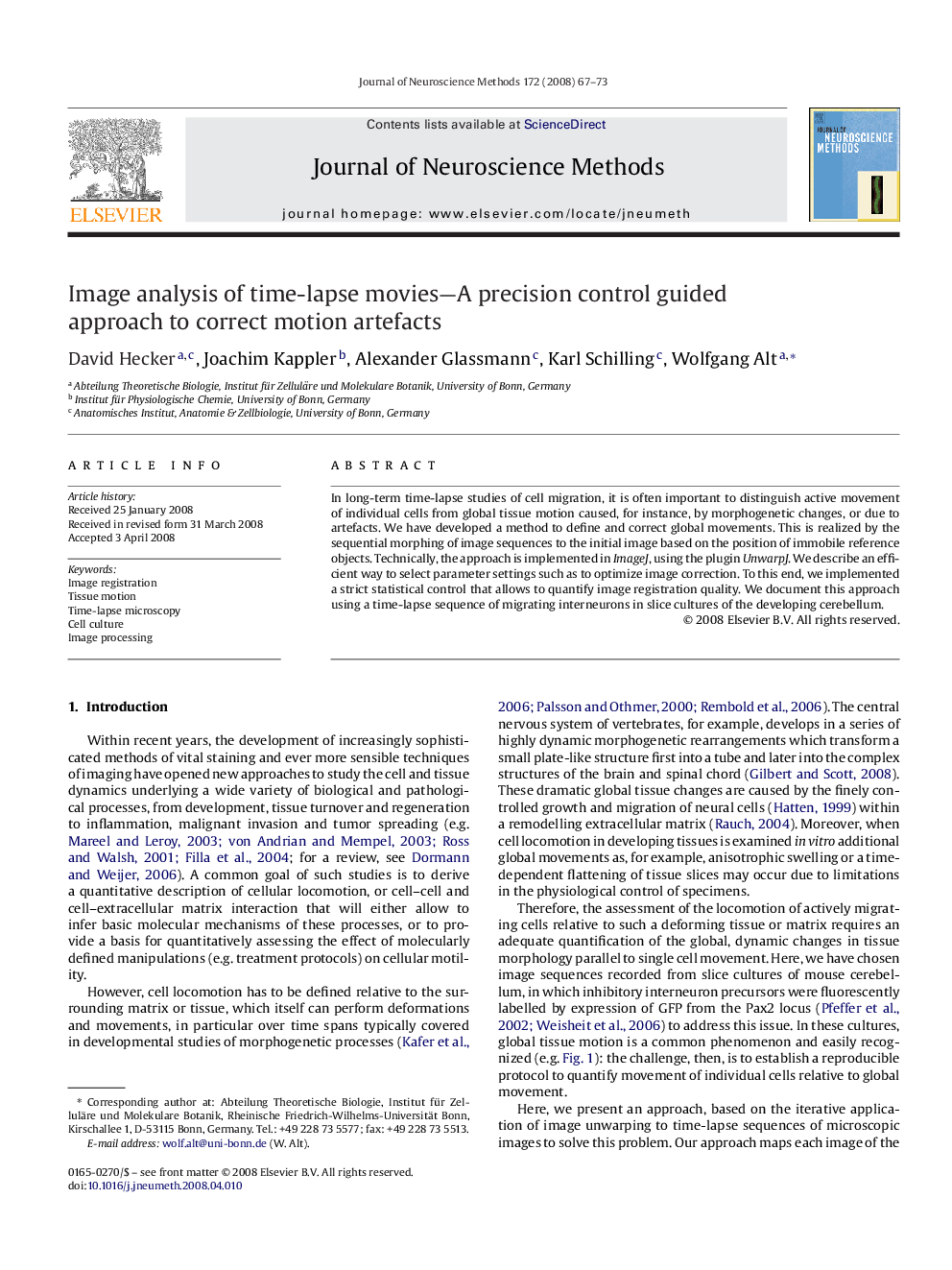| Article ID | Journal | Published Year | Pages | File Type |
|---|---|---|---|---|
| 4336037 | Journal of Neuroscience Methods | 2008 | 7 Pages |
In long-term time-lapse studies of cell migration, it is often important to distinguish active movement of individual cells from global tissue motion caused, for instance, by morphogenetic changes, or due to artefacts. We have developed a method to define and correct global movements. This is realized by the sequential morphing of image sequences to the initial image based on the position of immobile reference objects. Technically, the approach is implemented in ImageJ, using the plugin UnwarpJ. We describe an efficient way to select parameter settings such as to optimize image correction. To this end, we implemented a strict statistical control that allows to quantify image registration quality. We document this approach using a time-lapse sequence of migrating interneurons in slice cultures of the developing cerebellum.
